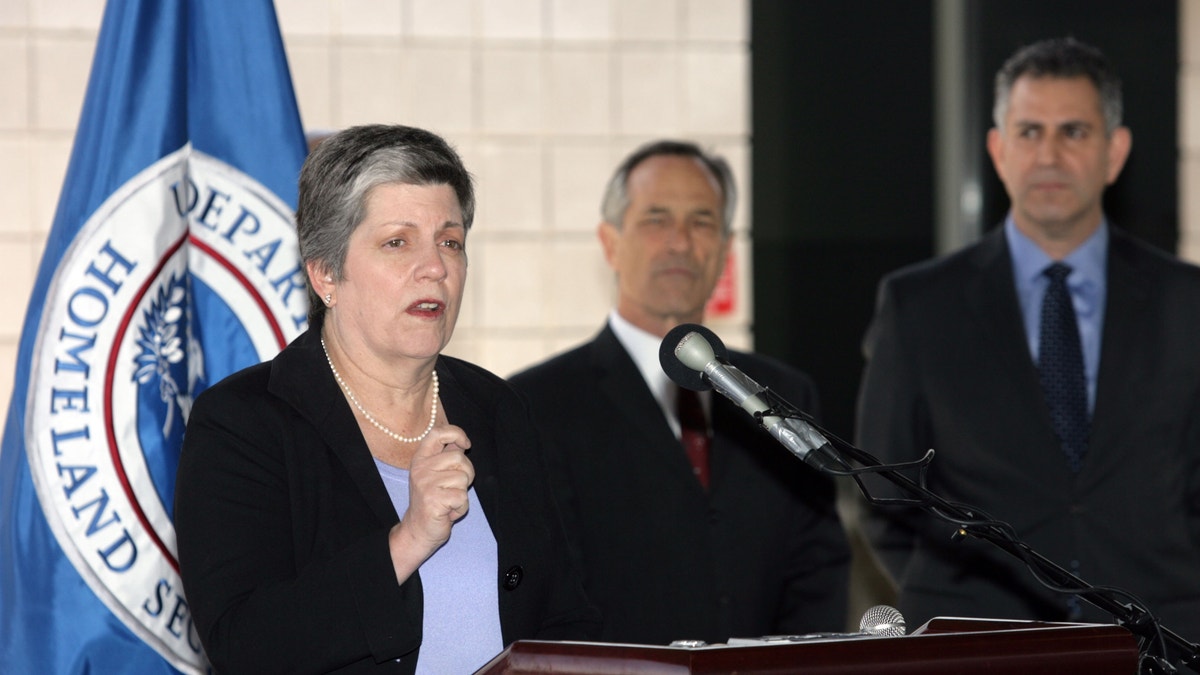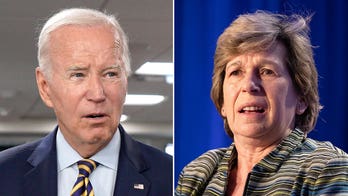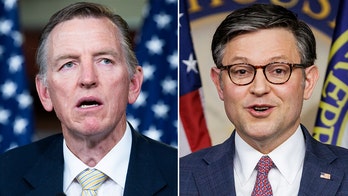
March 24: Secretary of Homeland Security Janet Napolitano shown here in El Paso, Texas says US-Mexico border security efforts are working but agrees those successes need to be built upon. (AP2011)
WASHINGTON -- The federal government hasn't come up with a comprehensive strategy to secure the U.S.-Mexico border, even as an all-out war between Mexico and its violent drug gangs has claimed 35,000 lives and pushed hundreds of thousands of immigrants into the United States.
The U.S. government has spent nearly $4 billion on various approaches, including a $2.4 billion border fence effort, two deployments of National Guard troops to temporarily bolster the Border Patrol, and a now-defunct $1 billion "virtual fence" that covered 53 miles of the 2,100-mile U.S.-Mexico border until the Obama administration scrapped it earlier this year.
"In spite of an effort to do more, there does not appear to be a plan in place that actually accomplishes the objectives of a secure border," Sen. John Cornyn, R-Texas, said earlier this month in a speech to the U.S.- Mexico Congressional Border Issues Conference.
The physical fence saw drugs catapulted over it, tunneled under it and even driven over with homemade ramps. "Show me a 10-foot fence, I'll show you an 11-foot ladder" became common wisdom along the border. And the Homeland Security Department now faces lawsuits from landowners who found their property in a no-man's land on the other side of the fence, inaccessible to the rest of the United States.
The U.S. also tried the SBInet virtual fence plan, abandoned earlier this year after a billion-dollar expenditure. Now there's a new plan to install cameras, radar and other gadgets. But that gear won't be in place border-wide until at least 2021 and maybe not until 2026, according to the Government Accountability Office.
Homeland Security Secretary Janet Napolitano says these efforts are working, and she points to a 36 percent drop in apprehensions at the border and the addition of thousands of newly hired Border Patrol and Customs and Border Protection agents. Those successes, she tells Congress, need to be built upon.
"In March 2009, the Obama administration launched the Southwest Border Initiative to bring focus and intensity to Southwest border security, coupled with a reinvigorated, smart and effective approach to enforcing immigration laws in the interior of our country," Napolitano said in written testimony submitted to the Senate Judiciary Committee earlier this month. "We are now two years into this strategy and, based on our own indicators of progress as well as previous benchmarks by Congress, it is clear that this approach is working."
But that initiative focused almost entirely on adding people and financial resources to the border, an effort that experts say is incomplete without a wider strategy that focuses on hard information about what and who is getting across the border daily, statistics the administration has been unable to collect. Most of the planning at the moment is focused on the Arizona-Mexico border, the busiest section of the border in terms of smuggling drugs and people. For that, Homeland Security has crafted a plan to replace the virtual fence, at a cost of another $775 million and five years.
Yet an overall strategy from the Pacific to Gulf coasts is lacking, critics say.
Bradley Schreiber, a former Homeland Security senior adviser and current vice president for the Applied Science Foundation for Homeland Security, said the government has employed a piecemeal strategy using technology or personnel. But so far the government hasn't developed a solid way to measure the threat and therefore can't know for sure if it is really responding to it in the best way.
"We don't know what the threat is because we haven't done a thorough assessment," Schreiber said. "We don't know what's coming across and we don't have a strategy to address it."
Doris Meissner, a senior fellow at the Washington-based Migration Policy Institute and one-time head of the former Immigration and Naturalization Service, said she doesn't see a clear goal or way to get there.
"There are a series of pieces," Meissner said. A comprehensive strategy "may already be there, but you can't tell because there is no goal."
She said the first step should be to define "secure." Congress has asked for operational control, which it considers the "prevention of all unlawful entries into the United States," including terrorists, illegal immigrants and drugs.
But Napolitano and other department officials say the goal is keep illegal crossing and smuggling to a "manageable" level.
David Aguilar, deputy commissioner for Customs and Border Protection and former Border Patrol chief, said the government's strategy is pretty simple: Mitigate the risk at the border, reduce that risk, and expand control across the border.
He said doing that includes a mix of technology, personnel and enforcement that stretches beyond just the immediate border region and relies heavily on a risk assessment that will vary from area to area. The government is working to collect data on who and what is coming across the border without being caught immediately, Aguilar said, but it's unclear when that data will be available.
"We will have to be constantly adjusting," Aguilar said. He added that U.S. authorities also take a close look at intelligence and data from Mexico, including the numbers of people traveling to well-known smuggling staging areas and the amount of bed space at guest houses where migrants often stay before being smuggled across the border.
Illegal border crossers have dropped to the lowest levels since the 1970s, and seizures of illegal drugs coming north and cash and weapons heading south have increased. But jobs in the U.S. have been scarce during one of the worst recessions since the Great Depression, and local and state authorities have increased efforts to make living in certain communities uncomfortable for illegal immigrants.
In a tense back and forth during Napolitano's Judiciary Committee testimony, Cornyn contended that more needs to be done at the border.
"Sustaining our current effort means that about a half a million people coming across the border here are detained," Cornyn said.
The fear of what could be unleashed next from Mexican President Felipe Calderon's four-year-old war against the drug cartels has border-state officials nervous. So far, about 350,000 people have been killed, including several dozen Americans. A recent report suggested about a quarter-million Mexicans have been displaced from their homes and about a quarter of those have come to the United States.
Cornyn said the unknown is precisely what worries him.
"As you know and I know, how many (border crossers) are detained tells you nothing about how many got away," Cornyn said. "This is a national security threat, so we need to regain the confidence of the American people before they're going to allow us to move forward on the kinds of things that you and I know we need to do to fix our broken immigration systems."




